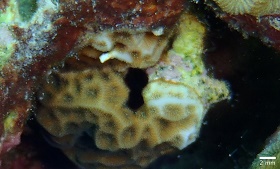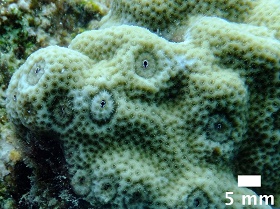Studying coral-associated fauna - Curaçao

Ever since my visit to the Australian Institute of Marine Science (AIMS) during my undergraduate degree I have had a passion for coral research. With support from the Groningen University Fund (GUF), I have been able to continue working with my favourite animals. I joined a group of four other master’s students on a research trip to Curaçao where we studied the distribution of coral-associated fauna across the coast of Curaçao. We did this by performing underwater belt transects covering 68,000 m2 of reef area across 4 depths at 17 locations. I had never done scientific diving before this trip, so this was a great experience for me as I now have over 50 logged scientific dives.

The Caribbean was an amazing place to study this topic. The diversity underwater was fantastic and reef health in certain places were pretty good considering the poor state of reefs globally. My most memorable dives including seeing dolphins, turtles, eagle rays and diving an amazing ship wreck called the Superior Producer which sank in the 80’s full of cargo. It was hard to not get distracted by these larger animals when conducting our surveys on the very small, and sometimes cryptic, coral-associated fauna. However, the vast array of corals and the associated fauna found on them was impressive.

My personal part of the research focused on specifically on two groups of coral-associated fauna; coral barnacles and boring mussels. In total we took 11,264 photographs and found 2355 coral barnacles and 568 boring mussels. I am currently writing up my final report for this project and the research has revealed many interesting results. Already our research team has published three scientific papers with hopefully more on the way! So far we have found that mussel shape in corals is much more variable than previously thought and, in addition, mussels cloak live coral tissue with their black mantle tissue. Due to this, it is possible that mussels inhabiting corals could have been overlooked in past research as they could have been mistaken for empty holes. I am truely grateful for receiving the GUF grant which made the entire trip possible.

